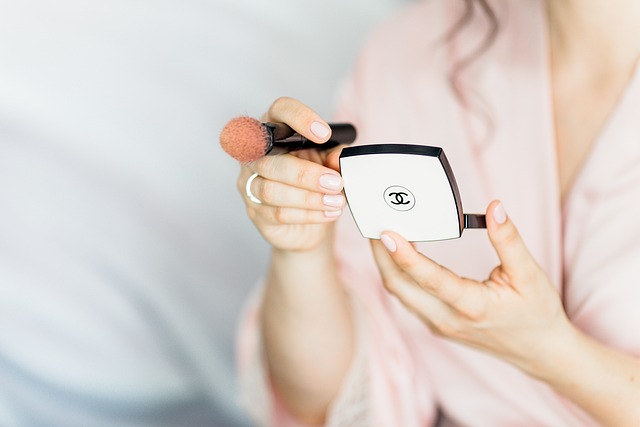The Art of Eyebrow Shaping: From Bushy to Sculpted
Eyebrows have long been a focal point of facial beauty, framing the eyes and enhancing overall expression. Throughout history, the ideal eyebrow shape has undergone numerous transformations, reflecting changing cultural norms and beauty standards. From the thick, natural brows of ancient civilizations to the pencil-thin arches of the 1990s, and now to the full, sculpted look popularized by social media influencers, eyebrow grooming has become an intricate art form. This shift in perception has led to a booming industry of specialized products, tools, and techniques designed to help individuals achieve their desired brow aesthetic. As we delve into the world of eyebrow shaping, we'll explore its rich history, current trends, and the impact it has on personal appearance and self-expression.

The Roaring Twenties and the Birth of the Thin Brow
The 1920s marked a significant shift in eyebrow aesthetics, as women began to embrace a more dramatic, theatrical look. Inspired by silent film stars like Clara Bow and Louise Brooks, thin, highly arched brows became the epitome of sophistication. Women would pluck their eyebrows into narrow lines and then draw them back on with pencil, often extending them beyond their natural shape for added drama. This trend continued through the 1930s and 1940s, with stars like Marlene Dietrich and Joan Crawford sporting ultra-thin, highly stylized brows.
The Natural Look of the 1950s and 1960s
As the mid-20th century approached, a more natural eyebrow shape came into vogue. Icons like Audrey Hepburn and Elizabeth Taylor popularized fuller, softer brows that complemented their features without appearing overly groomed. This shift towards a more natural look coincided with the rise of the “girl next door” aesthetic in Hollywood and reflected a broader cultural move away from the heavily stylized glamour of previous decades.
The Return of the Thin Brow in the 1990s and Early 2000s
The pendulum swung back towards thin brows in the 1990s, with supermodels and celebrities like Kate Moss and Gwen Stefani sporting ultra-slim, highly arched eyebrows. This trend reached its peak in the early 2000s, with many women opting for severely plucked or even completely removed brows, which were then drawn back on with pencil. The popularity of this look led to an increase in eyebrow waxing and threading services, as well as the development of specialized brow products.
The Instagram Era and the Rise of the “Power Brow”
The advent of social media, particularly Instagram, ushered in a new era of eyebrow aesthetics. Influenced by celebrities like Cara Delevingne and Kim Kardashian, the “power brow” emerged as the new ideal. This look is characterized by full, well-groomed brows with a strong arch and tapered ends. The popularity of this style has led to a surge in eyebrow-specific products and treatments, including microblading, brow tinting, and growth serums.
The Science of Eyebrow Aesthetics
Recent studies have shed light on the psychological impact of eyebrow shape and grooming. Research has shown that eyebrows play a crucial role in facial recognition and emotional expression. A 2019 study published in the Journal of Experimental Psychology found that people with more distinctive eyebrows were more easily remembered and recognized. Additionally, the shape and position of eyebrows can significantly influence how others perceive an individual’s personality traits, such as trustworthiness and competence.
Technological Advancements in Eyebrow Grooming
The beauty industry has responded to the increased focus on eyebrows with a range of innovative products and treatments. Microblading, a semi-permanent tattooing technique, has gained popularity for its ability to create natural-looking, hair-like strokes. Meanwhile, at-home brow tinting kits and growth serums have made it easier for consumers to maintain their desired brow look between salon visits. Advanced tweezers with LED lights and precision tips have also entered the market, allowing for more accurate hair removal.
Cultural Variations in Eyebrow Ideals
While certain eyebrow trends have gained global popularity, it’s important to note that ideals of beauty vary across cultures. In some Middle Eastern countries, for example, fuller, more natural brows are often preferred. In contrast, some East Asian countries have embraced the “straight brow” trend, which involves minimal arching and a more horizontal shape. These cultural differences highlight the diverse ways in which eyebrows are perceived and styled around the world.
The Environmental Impact of Eyebrow Products
As the eyebrow grooming industry has expanded, so too has concern about its environmental impact. Many conventional eyebrow products contain microplastics, synthetic dyes, and other potentially harmful ingredients. In response, eco-conscious consumers are increasingly seeking out sustainable alternatives, such as biodegradable brow gels and pencils made from natural ingredients. Some brands have also introduced refillable packaging to reduce waste.
The Future of Eyebrow Shaping
Looking ahead, the future of eyebrow shaping is likely to be influenced by a combination of technological advancements and shifting cultural attitudes. Virtual try-on tools using augmented reality are already allowing consumers to experiment with different brow shapes before committing to a change. Meanwhile, the growing acceptance of diverse beauty standards may lead to a more individualized approach to eyebrow grooming, with less emphasis on following trends and more focus on enhancing one’s natural features.
In conclusion, the art of eyebrow shaping has come a long way from its ancient origins, evolving into a complex interplay of cultural trends, scientific understanding, and personal expression. As we continue to explore new techniques and products for eyebrow grooming, it’s clear that this seemingly small feature will remain a significant aspect of beauty and self-presentation for years to come.




